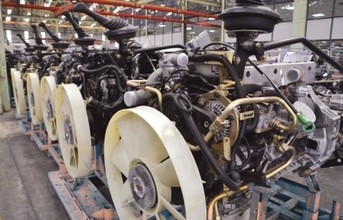
Competitiveness India’s auto component sector has high competitive intensity, and profit margins have been eroding steadily. Scale is difficult to achieve because of the product variety created by increasing vehicle variants. Some of the strategic levers mentioned earlier such as aftermarket sales, product diversification, development of process knowledge, and inorganic growth, will help in gaining such an edge. In addition, excellence in manufacturing and logistics and participating in strategic sourcing of key inputs such as steel can provide gains. Accessing funds Cost of capital and access to funds is a challenge due to low cash flow and valuations. Private equity and consolidation are helpful in some cases. Cost structure and delivery performance are impacted by infrastructure issues such as power shortage and high logistics cost. Internal operational excellence initiatives, alternative power sources, and exploring end-to-end logistics partners can help. People readiness Despite lower industrial activity, there exists a long term problem of low availability of skilled technical personnel, partly stemming from inadequate skilling at ITIs. Despite attrition issues, investment in further training is a good initiative. The large scale incidence of temporary and contractual employment in the automotive and component sector creates high employee turnover and has recently led to deterioration in the industrial relations climate. More proactive employee engagement, management of grievances and a relook at the extent of contractual employment is necessary. Even as OEMs relook at their approach, suppliers can proactively re-align their own practices where possible. Several component suppliers also suffer from a shortage of managerial talent, hindering scale up to multiple manufacturing locations, addressing sophisticated customers, or developing additional product lines. A focus on creating the right structure, augmenting the leadership team, and nurturing talent, will create readiness to handle growth. Way ahead The long term growth prospects for the Indian auto component sector are bright, but weathering the current slowdown is a challenge for auto component suppliers. There are also on-going challenges due to lack of scale and lack of access to talent, capital, technology, and infrastructure. A combination of carefully planned strategic moves and organisational initiatives will be the key for surviving the downturn and participating in the long term success of the industry. The author is Senior Principal with Tata Strategic Management Group END


























